Qt 个性化标题栏,自定义标题栏
目前还没有达到自己满意的地步,魔方别人写的的,先提供参考,后面在加入新的东西
头文件
#ifndef TITLEBAR_H
#define TITLEBAR_H #include <QWidget> class QLabel;
class QPushButton; class TitleBar : public QWidget
{
Q_OBJECT
public:
explicit TitleBar(QWidget *parent = 0);
~TitleBar(); protected:
/*
* 双击标题栏进行界面最大化/还原
*/
virtual void mouseDoubleClickEvent(QMouseEvent *event);
/*
* 进行鼠标界面的拖动
*/
virtual void mousePressEvent(QMouseEvent *event);
/*
* 设置界面标题与图标
*/
virtual bool eventFilter(QObject *watched, QEvent *event); private slots:
/*
* 进行最小化、最大化/还原。关闭操作
*/
void onClicked();
private:
/*
* 最大化/还原
*/
void updateMaximize();
private:
QLabel* m_pIconLabel;
QLabel* m_pTitleLabel;
QPushButton* m_pMiniMizeButton;
QPushButton* m_pMaximizeButton;
QPushButton* m_pCloseButton;
}; #endif // TITLEBAR_H
cpp文件
#include "titlebar.h"
#include <QLabel>
#include <QPushButton>
#include <QHBoxLayout>
#include <QEvent>
#include <QMouseEvent>
#include <QApplication>
#include <QSizePolicy>
#include <QIcon>
#ifdef Q_OS_WIN
#pragma comment(lib,"user32.lib")
#include <qt_windows.h>
#endif TitleBar::TitleBar(QWidget *parent) : QWidget(parent)
{
/*
* 设置标题栏高度
*/
this->setFixedHeight(30);
/*
* 初始化标题栏Button及Lable
*/
m_pIconLabel = new QLabel(this);
m_pTitleLabel = new QLabel(this);
m_pMiniMizeButton = new QPushButton(this);
m_pMaximizeButton = new QPushButton(this);
m_pCloseButton = new QPushButton(this); m_pIconLabel->setFixedSize(20,20);
m_pIconLabel->setScaledContents(true); m_pTitleLabel->setSizePolicy(QSizePolicy::Expanding,QSizePolicy::Fixed); m_pCloseButton->setFixedSize(27,22);
m_pMaximizeButton->setFixedSize(27,22);
m_pMiniMizeButton->setFixedSize(27,22); m_pTitleLabel->setObjectName("whiteLabel");
m_pMiniMizeButton->setObjectName("minimizeButton");
m_pMaximizeButton->setObjectName("maximizeButton");
m_pCloseButton->setObjectName("closeButton"); m_pMaximizeButton->setToolTip("Maximize");
m_pMiniMizeButton->setToolTip("Minimize");
m_pCloseButton->setToolTip("Close"); QHBoxLayout* pLayout = new QHBoxLayout(this);
pLayout->addWidget(m_pIconLabel);
pLayout->addSpacing(5);
pLayout->addWidget(m_pTitleLabel);
pLayout->addWidget(m_pMiniMizeButton);
pLayout->addWidget(m_pMaximizeButton);
pLayout->addWidget(m_pCloseButton);
pLayout->setSpacing(0); this->setLayout(pLayout); connect(m_pMiniMizeButton,SIGNAL(clicked(bool)),this,SLOT(onClicked()));
connect(m_pMaximizeButton,SIGNAL(clicked(bool)),this,SLOT(onClicked()));
connect(m_pCloseButton,SIGNAL(clicked(bool)),this,SLOT(onClicked())); } TitleBar::~TitleBar()
{ } void TitleBar::mouseDoubleClickEvent(QMouseEvent *event)
{
Q_UNUSED(event); emit m_pMaximizeButton->click();
} void TitleBar::mousePressEvent(QMouseEvent *event)
{
#ifdef Q_OS_WIN
if(ReleaseCapture())
{
QWidget* pWindow = this->window();
if(pWindow->isTopLevel())
{
SendMessage(HWND(pWindow->winId()),WM_SYSCOMMAND,SC_MOVE + HTCAPTION,0);
}
}
event->ignore();
#else
#endif } bool TitleBar::eventFilter(QObject *watched, QEvent *event)
{
switch (event->type()) {
case QEvent::WindowTitleChange:
{
QWidget* pWidget = qobject_cast<QWidget*>(watched);
if(pWidget)
{
m_pTitleLabel->setText(pWidget->windowTitle());
return true;
}
}
case QEvent::WindowIconChange:
{
QWidget* pWidget = qobject_cast<QWidget*>(watched);
if(pWidget)
{
QIcon icon = pWidget->windowIcon();
m_pIconLabel->setPixmap(icon.pixmap(m_pIconLabel->size()));
return true;
}
}
case QEvent::WindowStateChange:
case QEvent::Resize:
{
updateMaximize();
return true;
}
}
return QWidget::eventFilter(watched,event);
} void TitleBar::onClicked()
{
QPushButton* pButton = qobject_cast<QPushButton*>(sender());
QWidget* pWidget = this->window();
if(pWidget->isTopLevel())
{
if(pButton == m_pMiniMizeButton)
{
pWidget->showMinimized();
}
else if(pButton == m_pMaximizeButton)
{
pWidget->isMaximized()?pWidget->showNormal():pWidget->showMaximized();
}
else if(pButton == m_pCloseButton)
{
pWidget->close();
}
} } void TitleBar::updateMaximize()
{
QWidget* pWidget = this->window();
if(pWidget->isTopLevel())
{
bool bMaximize = pWidget->isMaximized();
if(bMaximize)
{
m_pMaximizeButton->setToolTip("Restore");
m_pMaximizeButton->setProperty("maximizePorperty","restore");
}
else
{
m_pMaximizeButton->setToolTip("Maximize");
m_pMaximizeButton->setProperty("maximizePorperty","maximize");
}
m_pMaximizeButton->setStyle(QApplication::style());
}
}
使用
#include "widget.h"
#include "ui_widget.h"
#include "titlebar.h"
#include <QPalette>
#include <QVBoxLayout>
Widget::Widget(QWidget *parent) :
QWidget(parent),
ui(new Ui::Widget)
{
ui->setupUi(this);
this->setWindowFlags(Qt::FramelessWindowHint | windowFlags()); //remove the title bar TitleBar* pTitleBar = new TitleBar(this);
this->installEventFilter(pTitleBar); this->resize(400,300);
this->setWindowTitle("Thunder");
// this->setWindowIcon(QIcon());
QPalette pal(palette());
pal.setColor(QPalette::Background,QColor(50,50,50));
setAutoFillBackground(true);
setPalette(pal); QVBoxLayout *pLayout = new QVBoxLayout();
pLayout->addWidget(pTitleBar);
pLayout->addStretch();
pLayout->setSpacing(0);
pLayout->setContentsMargins(0,0,0,0);
this->setLayout(pLayout); } Widget::~Widget()
{
delete ui;
}
这里的效果还是有问题的,还在排错中
Qt 个性化标题栏,自定义标题栏的更多相关文章
- Qt自定义标题栏
版权声明:若无来源注明,Techie亮博客文章均为原创. 转载请以链接形式标明本文标题和地址: 本文标题:Qt自定义标题栏 本文地址:http://techieliang.com/2017/1 ...
- Qt之界面(自定义标题栏、无边框、可移动、缩放)
效果 自定义标题栏 titleBar.h #ifndef TITLEBAR_H #define TITLEBAR_H #include <QLabel> #include <QPus ...
- setFeatureInt、android 自定义标题栏
Android 自带的toolbar 往往不能很好的的满足我们的个性化要求.因此我们经常使用自定的的标题栏.而Android系统本身也允许我们自定以标题栏. 记录一下,自定义标题栏常遇到的问题.先上效 ...
- Qt::QWidget 无默认标题栏边框的拖拽修改大小方式
开发环境:win10+vs2015+qt5.9.1 背景:开发过程中,一般很少会使用系统提供的标题栏和边框:往往都是自定义一个自己设计的方案.这时候在QWidget中需要加上flag:Qt::Fram ...
- UWP中实现自定义标题栏
UWP中实现自定义标题栏 0x00 起因 在UWP开发中,有时候我们希望实现自定义标题栏,例如在标题栏中加入搜索框.按钮之类的控件.搜了下资料居然在一个日文网站找到了一篇介绍这个主题的文章: http ...
- WPF 自定义标题栏 自定义菜单栏
自定义标题栏 自定义列表,可以直接修改WPF中的ListBox模板,也用这样类似的效果.但是ListBox是不能设置默认选中状态的. 而我们需要一些复杂的UI效果,还是直接自定义控件来的快 GitHu ...
- 【Win10开发】自定义标题栏
UWP 现在已经可以自定义标题栏了,毕竟看灰色时间长了也会厌烦,开发者们还是希望能够将自己的UI做的更加漂亮,更加与众不同.那么废话不多说,我们开始吧! 首先要了解ApplicationViewTit ...
- Android开发-取消程序标题栏或自定义标题栏
注:本文由Colin撰写,版权所有!转载请注明原文地址,谢谢合作! 在Android开发中,跟据需要我们有时候需要自定义应用程序的标题栏或者取消程序的标题栏,下面本菜鸟在此记录与分享一下自己使用的方法 ...
- Android应用开发基础篇(14)-----自定义标题栏
一.概述 每一个应用程序默认的标题栏(注意与状态栏的区别)只有一行文字(新建工程时的名字),而且颜色.大小等都是固定的,给人的感觉比较单调.但当程序需要美化的时候,那么修改标题栏是就是其中一项内容,虽 ...
- [置顶]
xamarin android自定义标题栏(自定义属性、回调事件)
自定义控件的基本要求 这篇文章就当是自定义控件入门,看了几篇android关于自定义控件的文章,了解了一下,android自定义控件主要有3种方式: 自绘控件:继承View类,所展示的内容在OnDra ...
随机推荐
- [18/11/7] Java的基础概念
java语言的优势是跨平台 ,计算机界的英语,是IT行业的第一大语言 特点是多线程 分布式 健壮性 面向对象 java和JavaScript的关系 雷锋和雷峰塔的关系 或卡巴斯基和巴基斯坦的关系有个基 ...
- insertAdjacentHTML与innerHTML
insertAdjacentHTML:insertAdjacentHTML() 将指定的文本解析为HTML或XML,并将结果节点插入到DOM树中的指定位置.它不会重新解析它正在使用的元素,因此它不会破 ...
- 数据库——MySQL——多表查询
这里多表,为了方便我只建了两张表,更复杂的表间也就是这些东西,就是复杂程度不一样. 数据源准备 建立一个学生表,和一个班级表 # 建立学生表 create table student( id int ...
- mac启动springboot失败,8080端口被占用,mac命令行关闭端口
如下图,idea启动springboot失败,8080端口被占用 Error starting ApplicationContext. To display the conditions report ...
- pl sql 存储过程、函数
存储过程用于执行特定的操作,当建立存储过程时,既可以指定输入参数(in),也可以指定输出参数(out),通过在过程中使用输入参数,可以将数据传递到执行部分:通过使用输出参数,可以将执行部分的数据传递到 ...
- fastRPC的数据库服务
根据整理的RPC模型,在此上,根据最近的项目,发布了DB服务,操作数据库.以RPC模型,发布数据库的操作服务,主要发送SQL语句,在服务端执行:同时引入了流行的数据库连接池:服务端还发布了文件接收服务 ...
- 【TOJ 1912】487-3279(hash+map)
描述 Businesses like to have memorable telephone numbers. One way to make a telephone number memorable ...
- Lavavel5.5源代码 - 并发数控制
app('redis')->connection('default')->funnel('key000') // 每个资源最大锁定10秒自动过期,只有60个资源(并发),在3秒内获取不到锁 ...
- Win7下如何安装python pygame的whl包
看了小甲鱼的python教程,对那个python版本的打飞机游戏很感兴趣,尝试运行,居然报错了,提示缺少pygame包: 仔细一看需要安装一个pygame的包,默认安装好python是不包括这个包的, ...
- 4.《python自省指南》学习
前言 前面几篇博客我都是通过python自省来分析代码并试图得出结论.当然,仅仅通过自省能解决的问题有限,但遇到问题还是不自主的去用这个功能,觉得对于认识代码的含义还是有一定帮助的.而这些自省的知 ...


